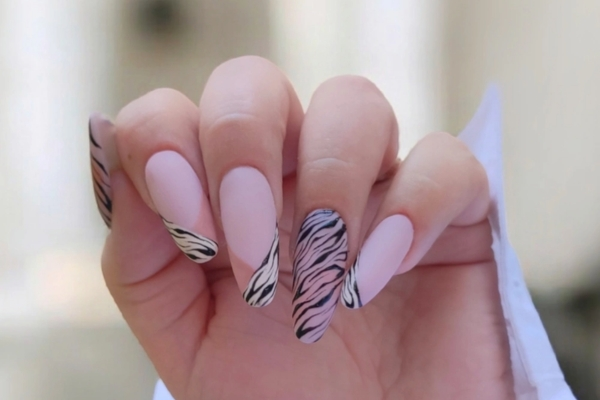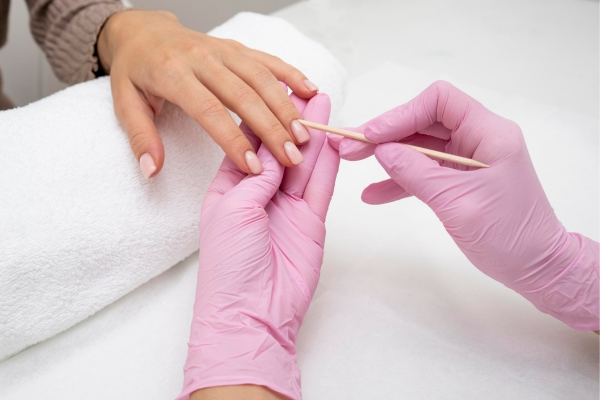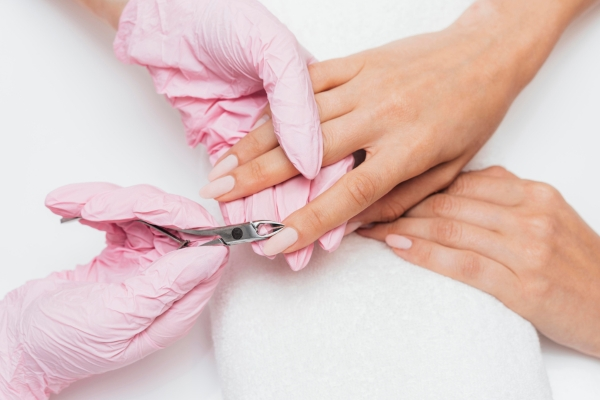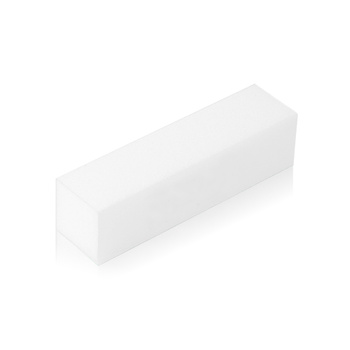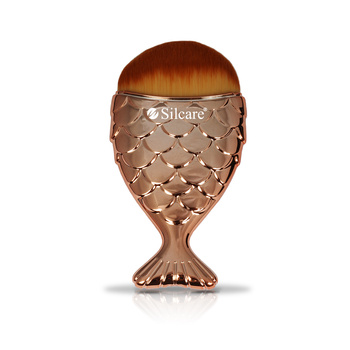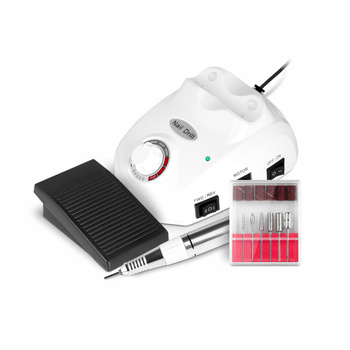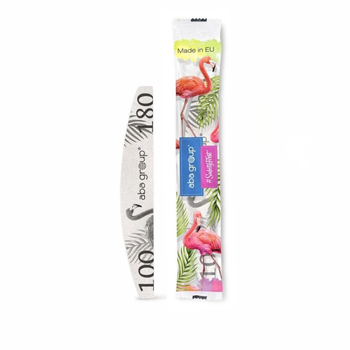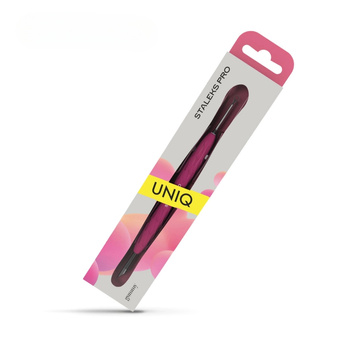Hybrid manicures and nail health: facts, mistakes, and safe practices
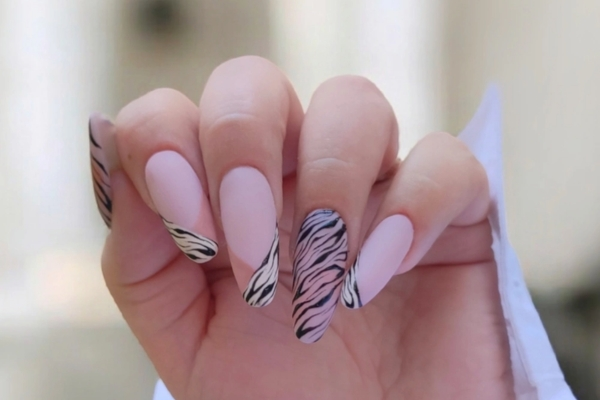
Do gel (hybrid) polishes damage nails? This question keeps coming back. In reality, it’s not the polish itself but technical mistakes during application and removal that can harm the nail plate. A properly done hybrid manicure not only doesn’t damage nails — it actually protects them from breaking and mechanical stress.
Below we debunk the most common myths and show how to care for your nails so they stay healthy and strong — even under a layer of color.
Do hybrid polishes damage nails — or is poor technique to blame?
Hybrid polish cannot penetrate the nail plate. It’s a UV/LED-cured product that forms a protective coating without harming the structure. Damage usually comes from improper prep, overly aggressive buffing or peeling the manicure off.
Do you believe the myths about hybrid polishes?
A hybrid manicure itself doesn’t damage nails. It’s poor technique, rushing and lack of aftercare that cause issues. To keep your manicure safe:
- prep the nail plate gently,
- cure correctly,
- nourish cuticles regularly.
Most common technical mistakes in hybrid manicures
- over-filing the natural nail,
- using a strong acid primer,
- curing too short or too long,
- peeling instead of soaking or e-filing.
Signs of nail plate damage after a hybrid manicure
Watch for:
- splitting at the free edge,
- white spots on the plate,
- excessive brittleness,
- uneven or wavy surface,
- pain or sensitivity after removal.
That’s a sign something went wrong. Take a short break and reach for a rebuilding base or strengthening oil.
Which stages strain nails the most?
The biggest risks occur during:
- Buffing — keep it gentle, only to improve adhesion.
- Removal — peeling off is the fastest way to paper-thin nails.
- Long acetone soaking — dehydrates the plate and cuticles.
Instead: use an e-file at low speed or control remover time (about 8–10 min). Never file down to the natural nail.
Safe removal: acetone vs. e-file
There’s no single perfect method — both have pros.
- Acetone works at home if used correctly (foil + limited time).
- E-file is safer in experienced hands — no chemicals, but requires precision.
The biggest mistake is scraping — that’s what causes micro-damage and weakening.
“Detox” from hybrid polish: when and how?
If nails look healthy, there’s no need for breaks. Nails don’t “breathe”. Consider a break if you see dehydration, allergy or over-filing. Then:
- apply a rebuilding base with keratin or biotin,
- oil cuticles daily (vit. E, almond, jojoba),
- avoid detergents and prolonged water exposure,
- don’t cut nails too short — let them grow naturally.
Strengthening bases (rubber, builder, BIAB): who are they for?
Modern hybrid bases can work wonders.
- Rubber base — flexible, ideal for thin/brittle nails.
- Builder/BIAB — levels the plate and allows slight extension.
Formulas enriched with keratin, amino acids and minerals support regeneration. Key: thin layers, proper curing, avoid flooding cuticles.
Lamp & curing: power, time, safety
Incorrect lamp power is underrated. Too weak won’t fully cure (risk of monomer sensitivity); too strong may overheat the plate.
Rules of thumb:
- minimum 48 W,
- 60 s for color, 90 s for top,
- clean diodes and regular bulb replacement.
Care between manicures: a restoring routine
After removal:
- use oils and urea creams,
- massage cuticles regularly,
- use a rebuilding base instead of classic polish,
- wear protective gloves for cleaning.
Regeneration usually takes 2–3 weeks — then you can safely go back to color.
Common mistakes and how to avoid them
- peeling instead of soaking — removes nail layers,
- over-aggressive filing — thins the plate,
- layers too thick — under-curing,
- no sealing of the free edge — early lifting,
- no cuticle hydration — cracks and inflammation.
Allergies (HEMA, monomers, photoinitiators): symptoms & what to do
Allergies to HEMA or other components occur more often with under-cured products. Symptoms: redness, itching, burning, blisters around nails.
What to do if you notice allergy symptoms?
- stop using the product immediately,
- take a break from manicures,
- consult a dermatologist,
- choose a HEMA-free system.
Can hybrid polish cause fungal infection?
Hybrid polish itself does not cause onychomycosis. It’s cured chemically; microbes can’t grow in it.
Fungus may develop due to mistakes or poor hygiene, e.g.:
- applying on damaged, moist nail plate,
- flooding/air pockets with moisture trapped under layers,
- improper tool disinfection (e.g., in salons),
- wearing the manicure too long (over 4–5 weeks),
- cuts or micro-injuries to cuticles.
If nails turn yellow, matte, thicken or smell — don’t reapply; see a dermatologist.
A well-done, hygienic hybrid manicure does not cause fungus — it can even protect the plate from damage.
FAQ
Does hybrid polish damage nails?
If applied and removed correctly — it protects them.
Why are nails soft after removal?
Usually due to over-filing or peeling.
Do I need breaks?
Not if your nails are healthy and cared for.
Which base for thin nails?
Rubber or builder/BIAB.
How to care between manicures?
Daily oil + moisturizer; avoid detergents.
See how to remove hybrid polish safely and our best cuticle oils ranking.
Recommended

